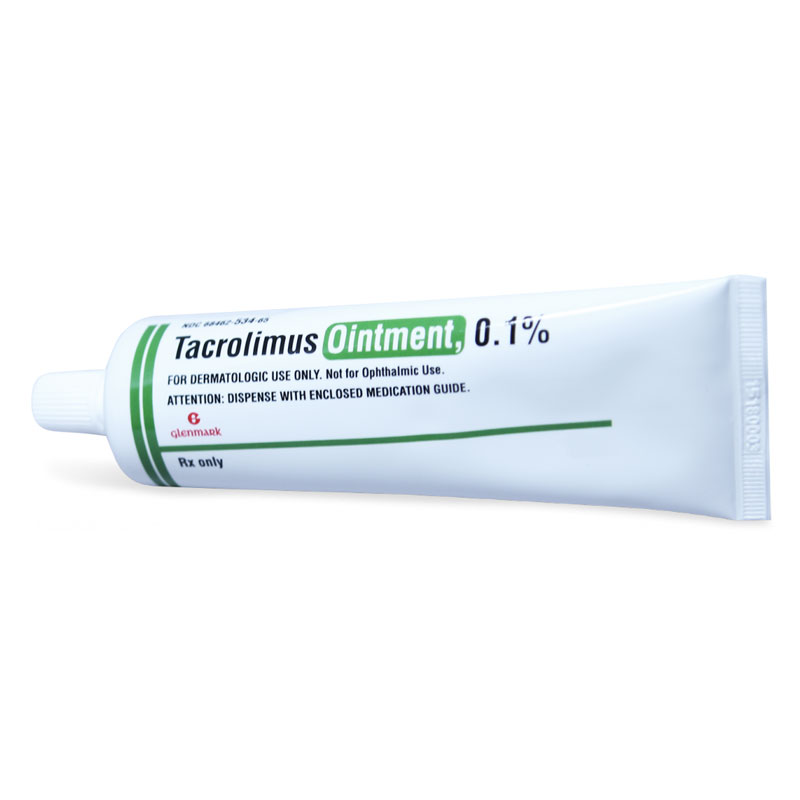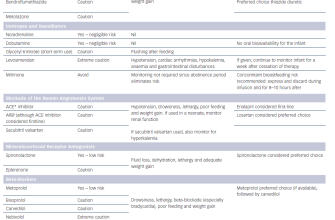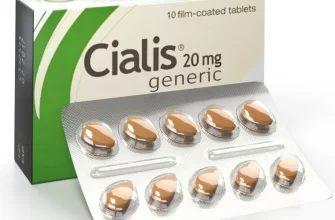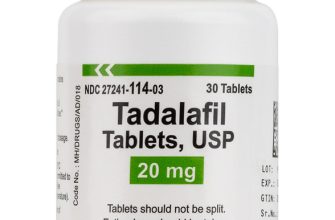Tacrolimus ointment offers a promising solution for dogs suffering from skin conditions such as atopic dermatitis and other inflammatory skin disorders. Its immunomodulating properties effectively reduce inflammation and itching, providing relief and promoting healing. If your dog is experiencing persistent skin issues, consider discussing this ointment with your veterinarian.
This topical treatment works by inhibiting T-lymphocyte activation and thus reduces the immune response in the skin. It is particularly useful for localized lesions and can be applied directly to affected areas. Apply a thin layer of the ointment as directed, ensuring the skin is clean and dry before application.
Regular monitoring is essential while using tacrolimus ointment. Watch for any signs of irritation or adverse reactions, and consult with your veterinarian if you notice any unusual symptoms. This approach helps ensure your dog’s comfort and well-being throughout the treatment process.
In combination with proper grooming and a healthy diet, tacrolimus can significantly improve your dog’s skin health. Explore its benefits as part of a broader treatment plan tailored to your dog’s specific needs.
- Tacrolimus Ointment for Dogs
- What is Tacrolimus Ointment and Its Uses in Dogs
- Applications in Veterinary Medicine
- Considerations and Precautions
- Indications for Tacrolimus Ointment in Canine Dermatology
- Other Indications
- Administration Guidelines
- How to Apply Tacrolimus Ointment to Your Dog
- Frequency of Application
- Aftercare and Precautions
- Potential Side Effects of Tacrolimus Ointment in Dogs
- Precautions to Consider When Using Tacrolimus Ointment
- Comparing Tacrolimus Ointment to Other Canine Dermatological Treatments
- Benefits of Tacrolimus Ointment
- Comparison with Other Treatments
- Recovery and Monitoring Your Dog While Using Tacrolimus Ointment
- Signs to Monitor
- Creating a Monitoring Schedule
- Consulting Your Veterinarian About Tacrolimus Ointment for Dogs
- Key Discussion Points
- Preparing for the Appointment
Tacrolimus Ointment for Dogs
Tacrolimus ointment offers relief for dogs suffering from certain skin conditions, particularly atopic dermatitis. This medication works by suppressing the immune response, reducing inflammation, and alleviating itching. It is typically applied twice daily to the affected areas, ensuring pets do not lick the treated spots to maximize its effectiveness.
Before using Tacrolimus, consult with a veterinarian to confirm the diagnosis and discuss any potential allergies. Apply a small amount directly to the skin, gently massaging it in. It’s crucial to monitor for any adverse reactions, such as increased redness or irritation, and report these to your vet promptly.
Keep in mind that Tacrolimus is not a first-line treatment and is often used when other medications are ineffective or unsuitable. It is also essential to maintain a consistent application schedule. Avoid combining it with topical corticosteroids unless advised by a veterinarian, as this may lead to decreased effectiveness or increased side effects.
Long-term use requires regular veterinary check-ups to assess the condition and adjust treatment as necessary. After starting Tacrolimus, many dog owners observe quicker improvement in their dog’s comfort and skin health, enhancing their quality of life.
What is Tacrolimus Ointment and Its Uses in Dogs
Tacrolimus ointment is a topical medication commonly prescribed for dogs to manage skin conditions, particularly allergic dermatitis and autoimmune skin diseases. It acts as an immunosuppressant, targeting inflammation and assisting in skin healing without the side effects associated with corticosteroids.
Applications in Veterinary Medicine
This ointment is particularly useful for localized areas of moist or red skin. It helps reduce itching, allowing dogs to experience greater comfort. Regular application is crucial; generally, it’s advised to apply a thin layer to the affected area twice daily. Observing the affected area after application is essential to monitor progress. If irritation or an allergic reaction occurs, consult your veterinarian promptly.
Considerations and Precautions
While Tacrolimus ointment is safe for many dogs, not all may respond positively. Always discuss your dog’s complete health history with your veterinarian before starting treatment. Avoid using this ointment on infected or severely irritated skin without veterinary advice. Additionally, keep the ointment out of reach to prevent ingestion.
Always follow your veterinarian’s instructions regarding dosage and application frequency for optimal results. Regular follow-up appointments will ensure that your dog’s condition improves and any adjustments to treatment can be made as necessary.
Indications for Tacrolimus Ointment in Canine Dermatology
Tacrolimus ointment serves as a targeted therapy for certain dermatological conditions in dogs. It is primarily indicated for the management of atopic dermatitis, helping to alleviate inflammation and itching associated with this condition. This topical treatment reduces the immune system’s overreaction to allergens, promoting a calmer skin environment.
Other Indications
In addition to atopic dermatitis, tacrolimus is beneficial for:
- Perianal Fistulas: It aids in reducing inflammation and discomfort.
- Pemphigus Foliaceus: As an immune-mediated disease, tacrolimus can help manage lesions.
- Contact Dermatitis: It effectively addresses localized reactions to various irritants.
Administration Guidelines
Apply the ointment to clean, dry skin. Use it as prescribed, typically twice daily, for optimal results. Monitor treatment areas closely for any signs of irritation or adverse reactions. Adjust the frequency based on your veterinarian’s recommendations.
| Condition | Benefits of Tacrolimus Ointment |
|---|---|
| Atopic Dermatitis | Reduces itch and inflammation |
| Perianal Fistulas | Minimizes discomfort and improves healing |
| Pemphigus Foliaceus | Helps manage lesions effectively |
| Contact Dermatitis | Addresses localized irritations |
Consult your veterinarian to determine the suitability of tacrolimus ointment for your dog and ensure it aligns with your pet’s treatment plan. Regular follow-ups help assess the progress and make necessary adjustments.
How to Apply Tacrolimus Ointment to Your Dog
Clean the affected area with mild soap and water, making sure to remove any dirt or debris. Pat the area dry with a clean cloth before applying the ointment.
Apply a thin layer of tacrolimus ointment directly to the affected skin. Use your fingertip or a clean applicator to spread it evenly. Avoid using too much; a small amount is sufficient for most cases. Ensure you cover the area completely to promote healing.
Frequency of Application
Generally, apply the ointment two times a day or as directed by your veterinarian. Maintaining a consistent schedule helps achieve the best results.
Aftercare and Precautions
Prevent your dog from licking or scratching the treated area. Use an Elizabethan collar if necessary to protect the ointment from being disturbed. Check the area regularly for any signs of irritation or infection and consult your veterinarian if you notice any changes.
Wash your hands thoroughly after applying the ointment to prevent contamination. Store the ointment in a cool, dry place, away from direct sunlight, and keep it out of your dog’s reach.
Potential Side Effects of Tacrolimus Ointment in Dogs
Monitor your dog closely after starting tacrolimus ointment. Some common side effects include:
- Skin Irritation: Redness, itching, or burning at the application site may occur. If severe irritation develops, consult your veterinarian.
- Increased Susceptibility to Infections: Tacrolimus suppresses the immune response, so watch for signs of infection such as swelling, pus, or increased warmth at the site.
- Gastrointestinal Issues: Some dogs may experience vomiting or diarrhea. Report any persistent gastrointestinal symptoms to your vet.
- Systemic Absorption: While rare, tacrolimus can be absorbed into the bloodstream, leading to systemic effects. Symptoms may include lethargy, loss of appetite, or behavioral changes.
To minimize risks, apply the ointment only as directed. Avoid using the medication on broken skin or open wounds, as this can increase absorption and side effects. Always wash your hands after applying the ointment to prevent accidental exposure.
If you notice any adverse reactions, consult your veterinarian immediately for guidance and possible adjustments to the treatment plan. Regular follow-up appointments may help ensure your dog’s health during treatment.
Precautions to Consider When Using Tacrolimus Ointment
Before applying Tacrolimus ointment to your dog, consult with your veterinarian to ensure it is suitable for your pet’s specific condition. It is critical to monitor your dog for any adverse reactions after application. Discontinue use and seek veterinary advice if skin irritations, redness, or swelling occurs.
Keep the ointment away from areas where your dog can lick it off. Use an Elizabethan collar if necessary to prevent this behavior. Avoid applying the ointment to infected or open wounds, as this can exacerbate the condition.
Store Tacrolimus ointment at room temperature, shielded from direct sunlight and moisture. Check the expiration date before use, as the potency may decrease past this point.
Pay attention to your dog’s overall health and medication interactions. Inform your veterinarian about any other medications or treatments your dog is receiving to avoid potential complications.
| Precautions | Description |
|---|---|
| Consultation | Always check with a vet before use. |
| Monitoring | Watch for any skin reactions post-application. |
| Licking Prevention | Use a collar to prevent licking. |
| Storage | Keep in a cool, dry place; check expiration date. |
| Medication Interactions | Inform your vet about all current medications. |
Regular veterinary follow-ups can ensure the treatment remains beneficial and safe for your dog. Be vigilant and proactive in addressing any concerns that arise during treatment with Tacrolimus ointment.
Comparing Tacrolimus Ointment to Other Canine Dermatological Treatments
Tacrolimus ointment stands out as a strong option for treating canine dermatitis, particularly when addressing atopic dermatitis in dogs. Unlike corticosteroids, which can lead to undesirable side effects with prolonged use, Tacrolimus offers a localized treatment approach that minimizes systemic absorption. This makes it safer for long-term use, especially in sensitive or young dogs.
Benefits of Tacrolimus Ointment
Its immunosuppressive properties target inflammation effectively, allowing for a calmer skin environment. Veterinarians often recommend Tacrolimus for conditions where skin barrier integrity is compromised. Regular application can help restore the skin’s health while reducing itchy sensations. Additionally, it may be combined with other therapeutic strategies for enhanced results.
Comparison with Other Treatments
Compared to antihistamines, which address allergic reactions with limited effectiveness for dermatitis, Tacrolimus provides a more direct anti-inflammatory action. In combination with medicated shampoos, it can enhance moisture retention and support skin healing. Unlike oral medications that impact the entire body, Tacrolimus focuses on the affected area, allowing for more targeted treatment. While oral corticosteroids can show rapid results, the risk of side effects makes Tacrolimus a safer, more sustainable choice for ongoing management.
Choosing the best treatment often depends on individual dog needs, skin type, and the specific condition being treated. Regular consultations with your veterinarian can help determine the most effective approach tailored for your dog’s dermatological issues.
Recovery and Monitoring Your Dog While Using Tacrolimus Ointment
Keep a close watch on your dog’s skin condition during treatment with Tacrolimus ointment. Regularly inspect the affected areas for any signs of improvement or adverse reactions.
Signs to Monitor
- Redness or irritation that worsens after application.
- Swelling or increased heat in treated areas.
- Signs of itching or discomfort.
- Any unusual discharge from the skin.
Creating a Monitoring Schedule
- Check your dog’s skin at least once daily, noting any changes.
- Document improvements or issues for future reference.
- Schedule follow-up vet appointments to review progress.
If you observe severe reactions such as excessive redness, swelling, or lethargy, discontinue use immediately and consult your veterinarian. Maintain an open line of communication with your vet to discuss any concerns or questions that arise during your dog’s treatment.
Maintain a consistent routine of applying the ointment, following the vet’s instructions for dosage and frequency. This will help establish a healing environment and improve outcomes.
Encourage your dog to refrain from licking the treated areas using an Elizabethan collar, if necessary. Protecting the site from further irritation boosts recovery.
By monitoring your dog’s response to Tacrolimus, you can ensure a successful treatment and contribute to your pet’s comfort and well-being.
Consulting Your Veterinarian About Tacrolimus Ointment for Dogs
Always consult your veterinarian before starting Tacrolimus ointment for your dog. This medication can help manage certain skin conditions, but professional guidance ensures it is suitable for your pet’s specific needs.
Key Discussion Points
- Diagnosis: Your veterinarian will assess the skin condition to confirm if Tacrolimus is appropriate. Accurate diagnosis is crucial for effective treatment.
- Dosing Information: Discuss the appropriate dosage for your dog’s size and specific condition. Dosing instructions must be followed closely.
- Application Instructions: Ask for detailed instructions on how to apply the ointment. Your vet can demonstrate proper techniques to minimize irritation.
- Potential Side Effects: Inquire about possible side effects to watch for. This can include skin irritation or allergic reactions.
- Monitoring Progress: Schedule follow-up appointments to monitor your dog’s response to the ointment. Regular check-ins allow adjustments if needed.
- Alternative Treatments: Discuss alternative options if Tacrolimus is not suitable for your dog. Your vet can suggest other medications or therapies.
Preparing for the Appointment
- Make a list of your pet’s symptoms and any changes you’ve noticed.
- Bring a record of your dog’s medical history and current medications.
- Prepare questions regarding the use of Tacrolimus and any concerns you may have.
Open communication with your veterinarian will enhance your dog’s treatment experience with Tacrolimus ointment. Your veterinarian’s expertise is invaluable in ensuring your pet receives the best care possible.








